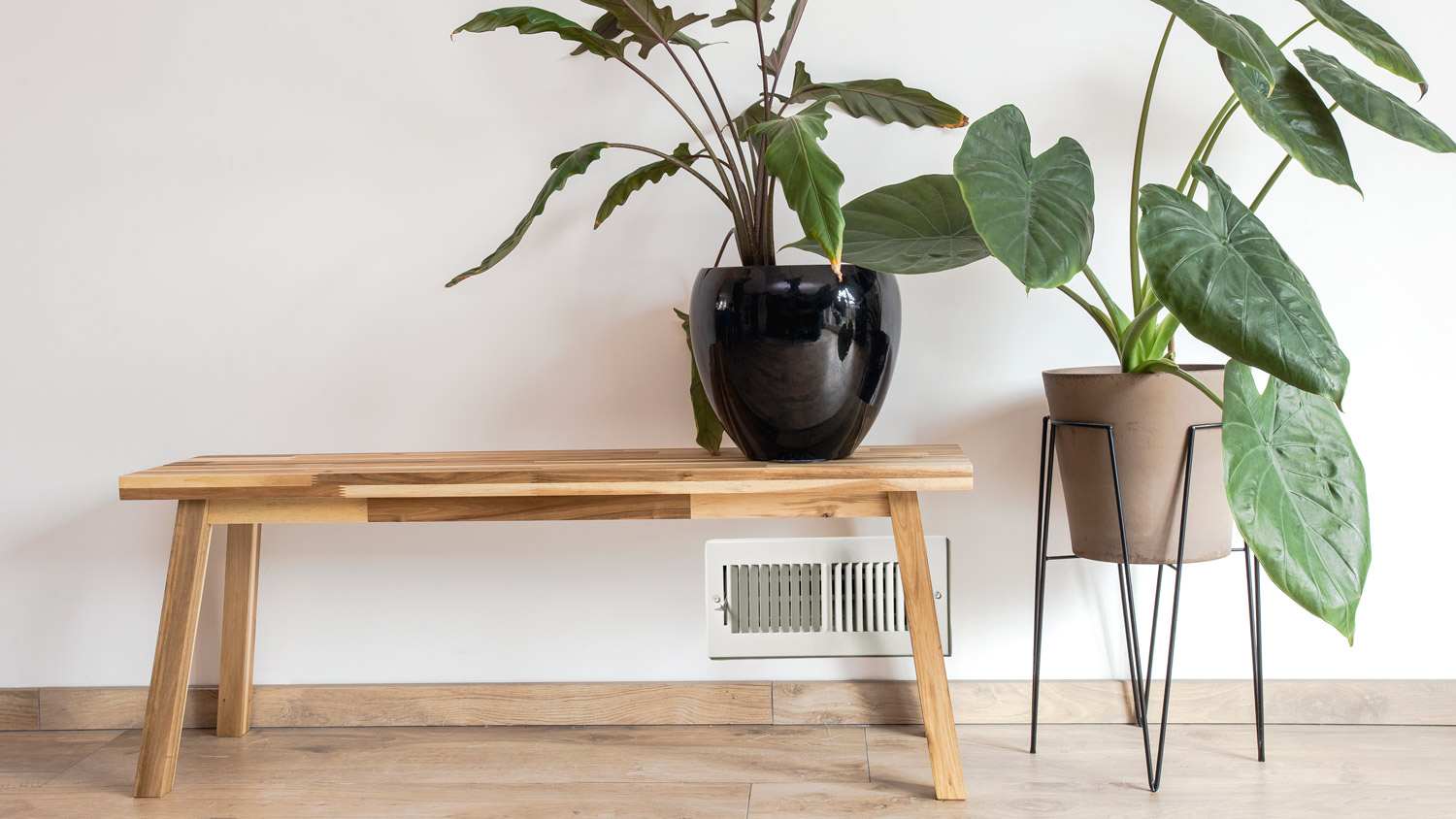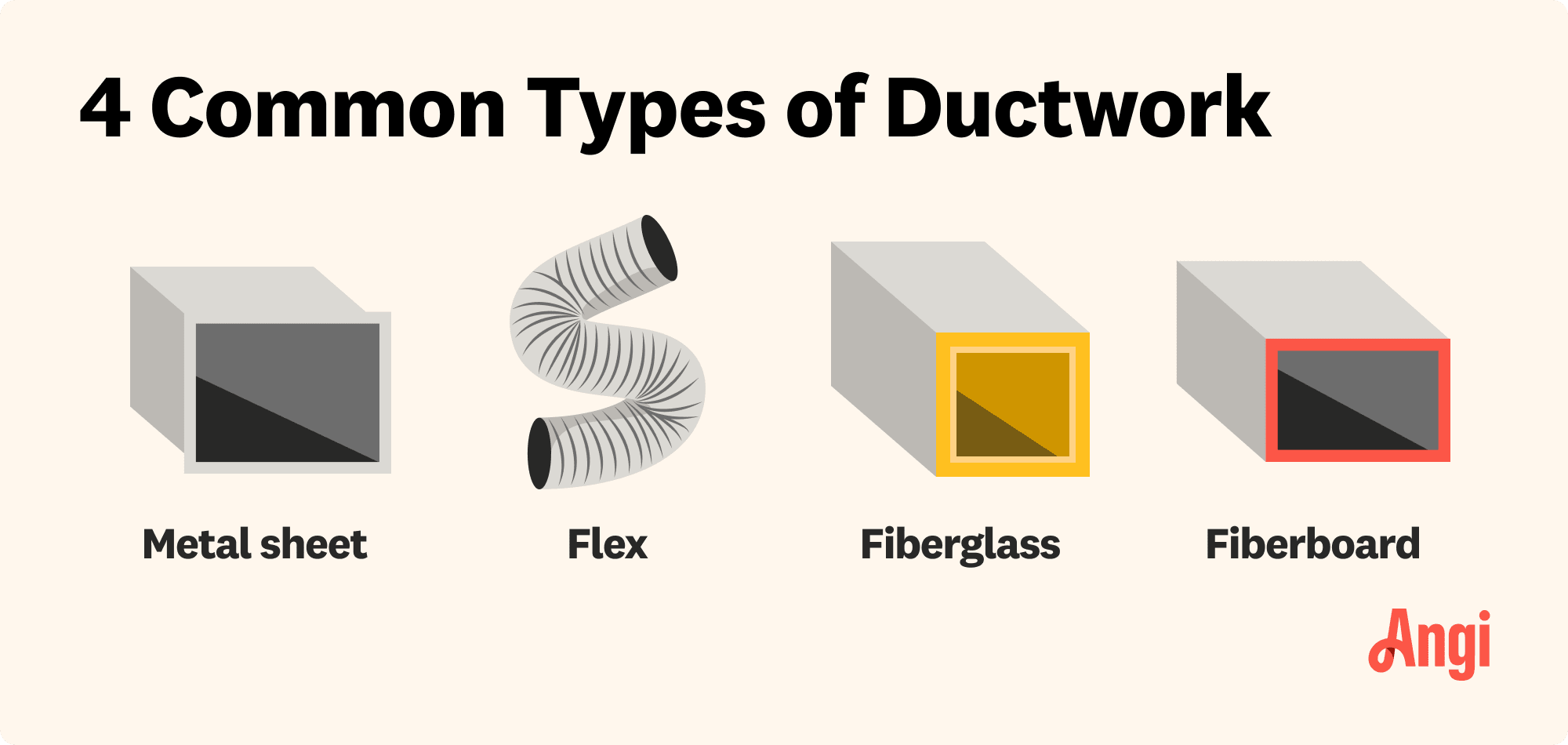
What you’ll pay in Columbus, OH, for furnace repairs depends on many factors. Here’s a breakdown of what can go wrong and the cost to fix those issues.
Air duct replacement in Washington, D.C., costs $419 to $1,278, with an average of $793. You’ll pay more for high-end materials or difficult access points. Reach out to a local HVAC pro for an accurate estimate.


Labor is a major cost driver, with HVAC professionals charging $85 to $150 per hour.
The choice of duct material significantly affects pricing, with different materials ranging from $18 to $55 per linear foot (including labor).
Replacing ductwork before selling a home sees an ROI of 35% to 70%.
Air duct replacement is a major home improvement project that directly impacts comfort and energy efficiency, especially in Washington, D.C., where historic builds and aging infrastructure often create complex ductwork challenges. Expect to spend anywhere from $419 to $1,278 on a replacement, or $793 on average, depending on factors like home size, duct location, and the materials used. Labor rates in D.C. also run higher than the national average, reflecting both the specialized skills required and the unique architectural hurdles found in older properties.
Air duct replacement in Washington, D.C., is influenced by several unique local factors. Residential architecture in D.C. commonly features rowhouses, historic properties, and multifamily buildings with unpredictable duct layouts and limited access, often requiring creative solutions from HVAC professionals. Here are the major cost factors to consider.
The size of your home directly affects air duct replacement costs. Larger homes require more materials and labor to replace the entire duct system. On average, the cost ranges from $2,000 to $5,000 for a small- to medium-sized home. However, duct replacement can run as low as $1,400 for smaller homes and as high as $9,000 for larger homes. Here’s how the size of your duct system affects replacement costs:
| Home Size in Square Feet | Average Cost Range |
|---|---|
| 1,000–1,500 | $1,400–$3,400 |
| 1,500–2,000 | $2,100–$4,500 |
| 2,000–2,500 | $2,800–$5,600 |
| 2,500–3,000 | $3,500–$6,700 |
| 3,000–3,500 | $4,200–$7,800 |
| 3,500–4,000 | $4,900–$9,000 |
If only specific sections of your ductwork need replacement, such as in a renovation project, costs will depend on the location of the damaged or worn ductwork. Replacing ducts in hard-to-reach or concealed areas—like attics, basements, ceilings, walls, or crawl spaces—can increase labor costs. Here’s how the location of the ducts could affect their cost:
| Duct Location | Cost per Linear Foot |
|---|---|
| Crawl space | $30–$55 |
| Attic | $27–$50 |
| Basement | $26–$45 |
| Ceiling/wall | $35–$65 |
| Exposed | $18–$35 |

The material you choose for your replacement ducts affects both their cost and longevity. The most commonly used duct material in Washington, D.C., is metal sheet.
Sheet metal ducts are durable but pricey. Flexible ducts, on the other hand, are more affordable but may need to be repaired or replaced sooner. Here’s a breakdown of air duct replacement costs based on the type of duct material:
| Duct Material | Average Cost per Linear Foot (Installed) |
|---|---|
| Galvanized sheet metal | $35–$55 |
| Aluminum | $40–$65 |
| Flexible | $18–$30 |
| Fiberglass | $22–$38 |
| Fiberboard | $20–$27 |
Homeowners pay $85 to $150 per hour for HVAC technicians in Washington, D.C. Most duct replacement jobs take 20 to 40 hours, with total labor charges ranging from $1,500 to $5,000, especially in older or complex homes needing custom ductwork.
Additional fees include service calls ($49 to $200), inspections ($40 to $100), and premiums for urgent or off-hours work. Custom sheet metal fabrication also adds cost due to specialized skills.
When embarking on a duct replacement project in Washington, D.C., homeowners can benefit from hiring other specialized professionals alongside their HVAC team:
General contractor or carpenter: For projects involving significant wall or ceiling cutting, which is common in older D.C. homes, a general contractor can restore drywall, plaster, or decorative finishes after duct installation.
Electrician: When new HVAC zones, smart dampers, or digital controls are part of the upgrade, licensed electricians provide safe, compliant wiring for your project.
Insulation specialist: Particularly for attic and crawl space duct runs, professional insulation maximizes system efficiency and reduces the chances of moisture and temperature-related problems.
Mold remediation specialist: In older or water-damaged ducts, professional mold abatement is often required before new ductwork can be safely installed.
Energy auditor: A certified energy auditor can verify that your new ductwork is achieving intended efficiency gains and could be a prerequisite for rebates or tax credits
Replacing air ducts can positively influence home value in Washington, D.C.’s, competitive real estate market. Although the direct return on investment (ROI) for HVAC replacements and ductwork ranges from 35% to 70%, the perceived value is often higher. Homes with updated systems sell faster, attract stronger offers, and face fewer concessions during negotiations.
In D.C., where older housing and humid summers make HVAC performance critical, replacing aging or inefficient ductwork is a strategic move. If your system is more than 15 years old, frequently needs repairs, or uses outdated materials, replacement can prevent inspection red flags and boost buyer confidence. Even if full replacement isn’t feasible, improvements like duct sealing or duct cleaning can still enhance appeal.
Home is the most important place on earth, which is why Angi has helped more than 150 million homeowners transform their houses into homes they adore. To help homeowners with their next project, Angi provides readers with the most accurate cost data and upholds strict editorial standards. We survey real Angi customers about their project costs to develop the pricing data you see, so you can make the best decisions for you and your home. We pair this data with research from reputable sources, including the U.S. Bureau of Labor Statistics, academic journals, market studies, and interviews with industry experts—all to ensure our prices reflect real-world projects.
Want to help us improve our cost data? Send us a recent project quote to [email protected]. Quotes and personal information will not be shared publicly.
From average costs to expert advice, get all the answers you need to get your job done.

What you’ll pay in Columbus, OH, for furnace repairs depends on many factors. Here’s a breakdown of what can go wrong and the cost to fix those issues.

When your heat goes out, it can cause a bit of a panic. But knowledge is power, so let's go over radiator repair costs before that happens.

Discover the primary whole-house air filtration system cost factors when installing one in your home to help remove airborne contaminants and allergens.

Discover the benefits of a DIY outdoor wood furnace forced-air system. Cut costs, reduce fire risk, and embrace renewable heat for your home.

An AC coil is an expensive part to replace and it won’t always be the right investment. Learn whether to replace a coil or the entire system.

Need to purchase a new gas furnace but aren’t sure which type is right for your home and needs? Taking a little bit of time to research furnaces to see which option is right for you can save you money over time. Here’s a look at five furnace types.